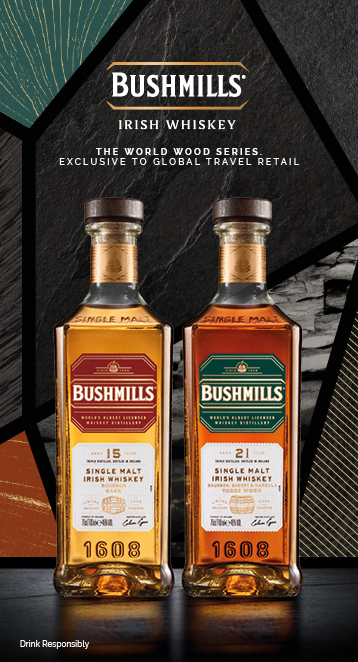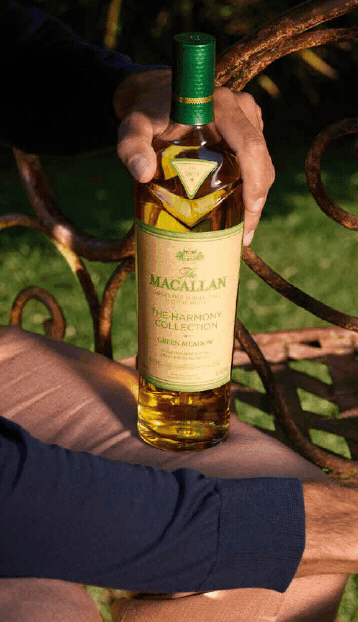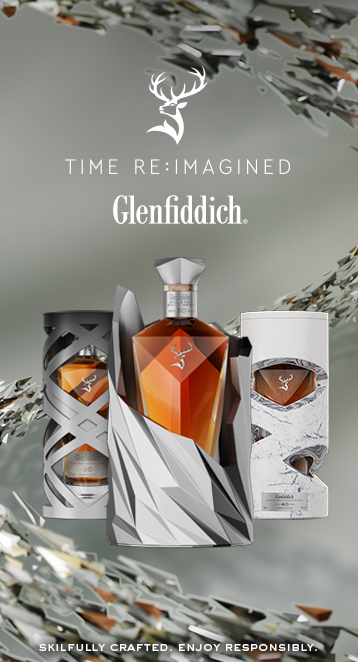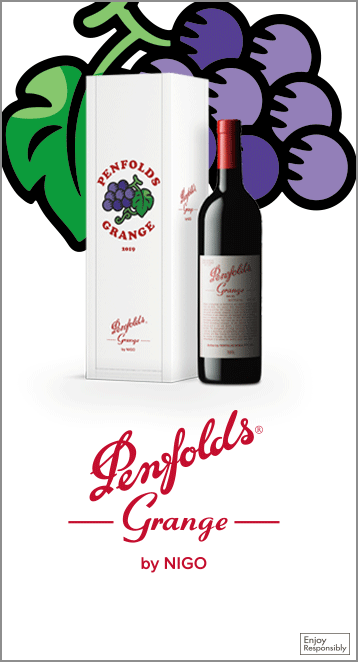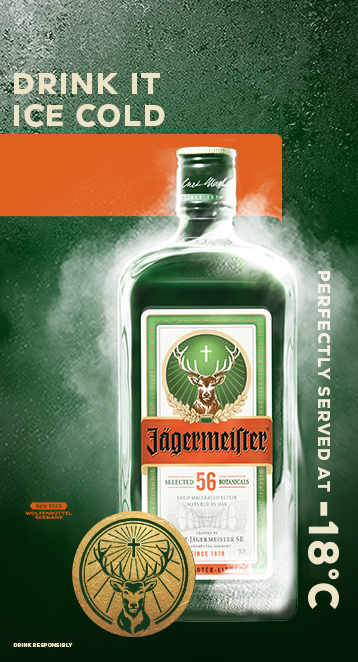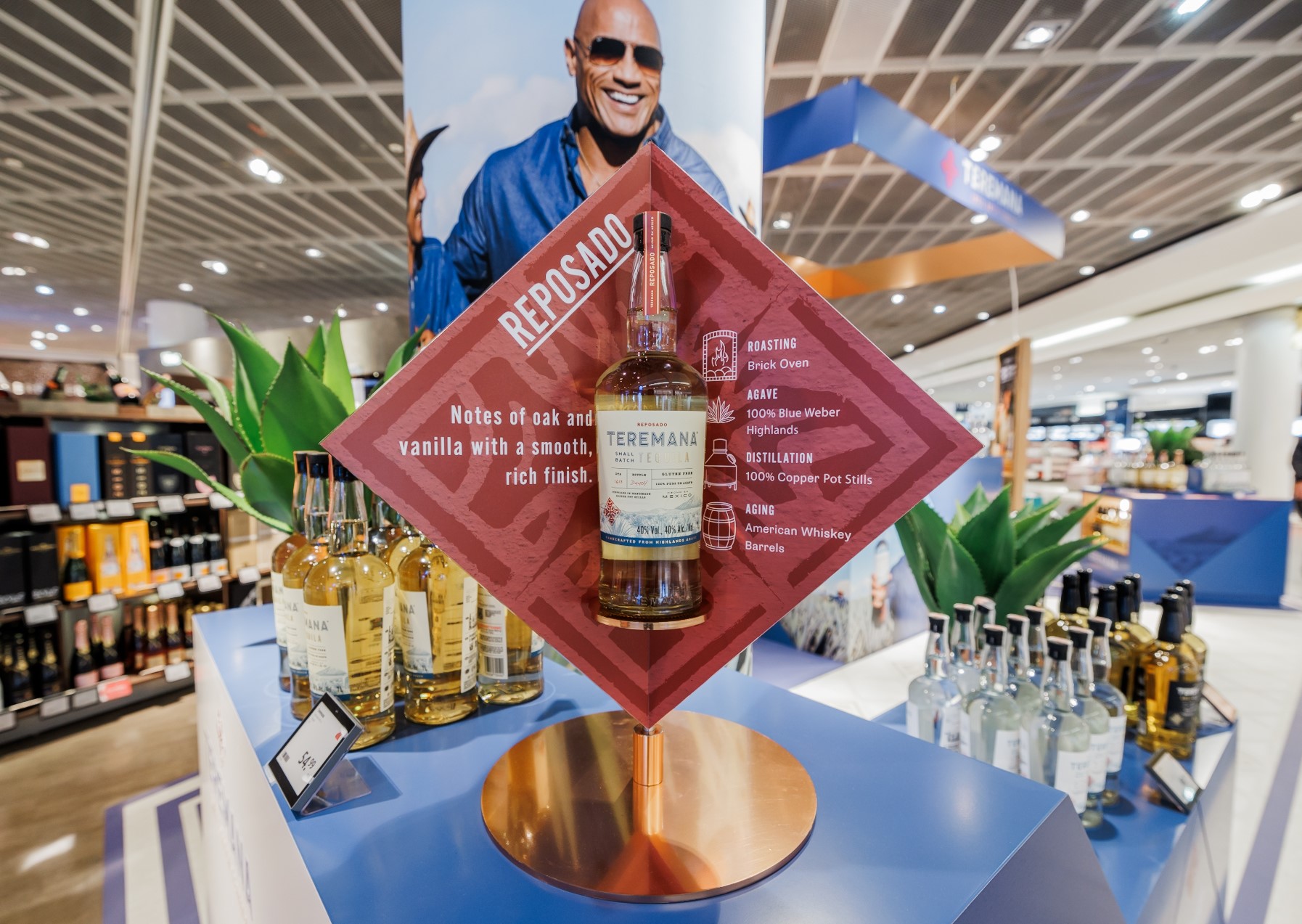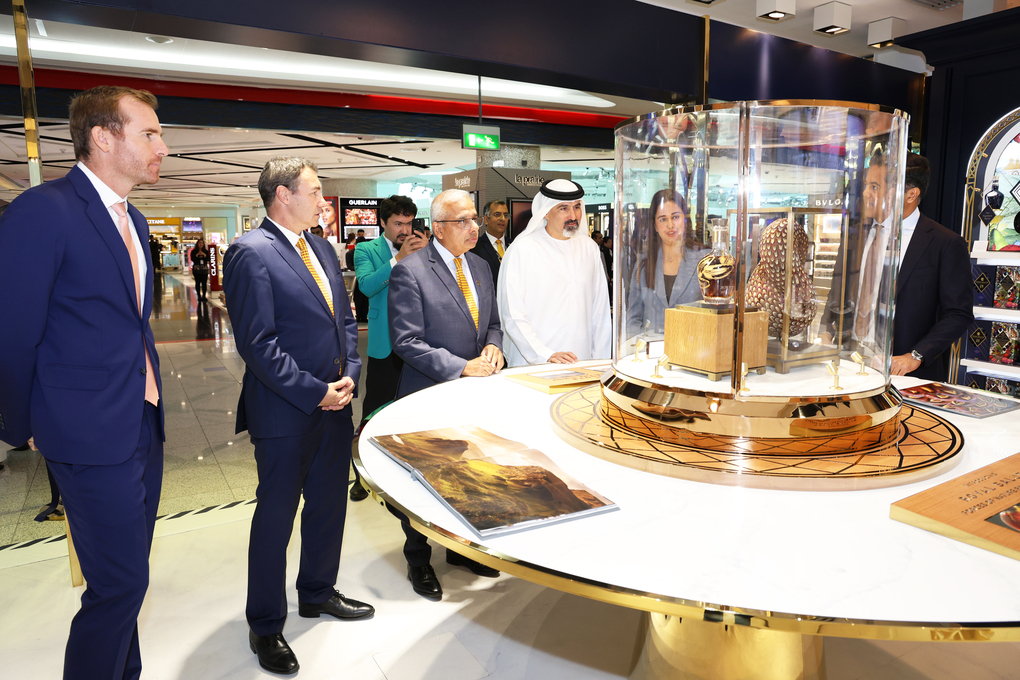
Introduction: Pankaj K (PK) Garg is an unlikely drinks company entrepreneur. Born, raised and educated in India, he forged a successful 24-year career in management consultancy in the US with EDA/A.T. Kearney, Tech Mahindra and Bridge Strategy Group before embarking in 2014 on a remarkable venture inspired by his Indian roots. Having perfected the recipe for a cream liqueur featuring a medley of favourite Indian ingredients in their home kitchen, Garg and his wife Swati created a new brand called Sōmrus – Hindi for nectar of the gods.
Since its launch in March 2014, The House of Sōmrus has built a strong presence in selected US states. Now Garg has world markets, including duty free, in his sights, all part of a bold plan to become the world’s third-biggest cream liqueur and a US$1 billion enterprise that will ultimately attract the interest of the drinks industry’s biggest players. He told The Moodie Davitt Report Founder & Chairman Martin Moodie about the journey to date and what he sees as the ultimate destination. [Additional editing by Mark Lane]
“My story is actually more than my story and than that of my brand. In some ways, it’s also the story of our country.” Pankaj K (PK) Garg, the creator of fast-growing liqueur brand Sōmrus, traces its inspiration and success back to his family roots in the northwestern Indian state of Rajasthan. His life journey was heavily shaped by his mother, who completed a Master of Arts in English – unusual for an Indian woman at the time.
“She was an avid reader of literature – Shakespeare and all kinds of stuff,” Garg recalls. “She instilled me in the importance of studying, because she firmly believed that once you are well educated, you can travel the world.” She also pointed out that manufacturing in India pre-independence had been limited to what the British colonialists were exporting out of India. As a result, some of those Indians who subsequently moved into manufacturing became big industrialists as the country effectively grew from scratch in 1947.
As India entered a phase of infrastructure development, building roads and bridges, a white-collar professional sector – led by engineers and doctors – prospered, along with a nascent tourist destination of colour, culture and much wonder that would flourish in the age of mass travel, “That’s what I call India 1.0.” says Garg.
After studying engineering in India, he left for the US in 1987 to do a Masters degree at the University of Illinois in Chicago. “I wanted to establish my career not in engineering but in the management side of things. India was still a developing country and you could have more lucrative careers here in the US. My uncle – my mother’s brother – is a physician here in Chicago as well, and that influenced me.”

Although returning every year to visit India, Garg settled in Chicago, starting his career with General Motors in 1990. “It was a defining time, because the whole American automotive industry went through a lot of transformation in the 1990s and the internet came out in 1994. This is the time when globalisation was really starting to happen, and Indians were starting to make their mark on the world.”
“The dessert in question was called rasmalai, very famous in India – if you wake up any Indian in their sleep and give them a spoon they’ll want a bowl of it!”
Garg would soon make his own, forging a highly successful career in management and strategic consulting with leading firms EDA/A.T. Kearney, Tech Mahindra and Bridge Strategy Group. Key to those roles was his ability in working with senior management and boards in developing businesses into higher economic value propositions. “So it was in the back of my mind that if I came across an opportunity that I could develop myself, I would certainly look at it,” he remembers.
By the turn of the century, India was very much on the world map, the internet’s emergence having driving an outsourcing sector heavily dependent on technology professionals from India, who increasingly started travelling. India transitioned quickly from a highly protected economy to a global one, a phenomenon closely monitored by Garg from the US and during his frequent visits home. A wine lover, Garg noted than even by the turn of the century the wine category in India was virtually non-existent, despite the country boasting a fifth of the world’s population. The seed of an idea around alcohol was planted, one that would ultimately germinate into a very different kind of product.
The breakthrough moment came in 2010 as he took a Business Class flight from Delhi to Chicago. “On the flight I had a spicy Indian meal… and they asked me what I would like for dessert. I am not a dessert person, so I asked for a 50cl miniature of Baileys Irish Cream instead. That was my nightcap and dessert – I loved Baileys. Then the lady serving me said we have a dessert from India, which I would highly recommend you try.
“The dessert in question was called rasmalai, very famous in India – if you wake up any Indian in their sleep and give them a spoon they’ll want a bowl of it! It’s that popular for a billion-plus people. So I wasn’t expecting much, but I had this fantastic bowl of rasmalai, which is made from cardamom, saffron, almond rose, pistachio, and cream.”
Suddenly the prospect of his Baileys paled alongside the explosion of delectable flavours in front of him. “That’s when the epiphany came to my mind,” Garg remembers. “That dessert has a liquid emulsion of cream. I said, if this emulsion had alcohol in it then I would totally want it because that’s the flavour I like. And then I thought, ‘Oh my god, we have no drink like this in India that represents such a big civilisation.’”

After returning home, Garg discussed the idea with his wife Swati. Some quick research revealed that there was no liqueur or cordial [a sweetened distilled spirit -Ed] representing India. “I looked at some of the major liqueur brands, which are all inspired from their countries of origin. So you have Baileys from Ireland, Kahlua from Mexico, Amarula from South Africa, Jägermeister from Germany, Cointreau from France, Drambuie from Scotland and so on. But for a country and a subcontinent renowned for flavours, aromas and taste for centuries there was no liqueur. So that’s when we started developing the world’s first Indian cream liqueur.”
“I don’t know what that babysitter thought we were doing, with the kitchen island full of booze bottles, beakers, weighing scales, all that kind of stuff – it was pretty unusual!”
The cream component was straightforward, one that reflected not only Garg’s taste but that of a nation of 1.3 billion people. “The people of India are extremely heavy consumers of cream. In fact, all of the desserts are cream-based – even if they have a cake, they will find a way to put some cream on it. Then there was the worldwide popularity of Baileys, which was not only a cream liqueur but the number-one SKU in the entire liqueur category.”



The Gargs set about taking centuries-old Indian recipes and trying to convert them into tasty cream liqueurs. “We wanted to ensure that we created a product not only loved by Indians, but that others could relate to. So we did focus groups all over the world, to make sure our liquids were such that a non-Indian enjoys them as much as an Indian.”
That creative process took four years, played out not in any laboratory but in the Garg’s home kitchen. “We started in 2010 at a time when our first child was three years old, with the second child arriving during this time. We would call a babysitter – who would normally expect the husband and wife to be going on a date or something – and usually work on the liquid on a Saturday night. Remember that at this time I still had a full-time job.
 “I don’t know what that babysitter thought we were doing, with the kitchen island full of booze bottles, beakers, weighing scales, all that kind of stuff – it was pretty unusual! We were literally doing everything on our own… using handwritten recipes.”
“I don’t know what that babysitter thought we were doing, with the kitchen island full of booze bottles, beakers, weighing scales, all that kind of stuff – it was pretty unusual! We were literally doing everything on our own… using handwritten recipes.”
But right from the start, Garg had much grander visions than simply creating a small family enterprise. “I was enjoying it so much that I was thinking if I could make a career out of it, it would be wonderful. I sighted a huge white space opportunity – that from a civilisation known for taste, flavours and aromas, the liqueur category didn’t exist.” Consumption trends in India also supported his optimism, with more women drinking, together with a move to lighter alcohol drinks and the nascent craft beer revolution.
“So the writing was on the wall – I thought what we were trying to do was going to happen, whether we did it or somebody else did.” That belief was reaffirmed during an early discussion with a senior Beam Suntory executive Garg knew from his consultancy work. “His first comment was ‘PK, why didn’t somebody think of this before?’ For one thing, there are so many expats – 30 million Indians living all over the world. They are your natural brand ambassadors. And Indian food and Indian flavours are on the rise across the world, turmeric and cardamom and all of these things. So, I strongly believed that it was a matter of who started first.”
The authenticity of the liquid had to carry through to the name. Garg opted for Sōmrus, a word dating back to 2600 BC that meant nectar of the gods. “We took that name because in the Indian domestic market they are still hung up on using anglicised names – Indian whiskies called Officer’s Choice, Aristocrat and so on. We didn’t want to do that.
“I started thinking about the name in 2010. Social media was in full force, and I could see the millennials in India being really proud of their culture and civilisation. So I wanted to go the other way around. Why don’t we make it an Indian name, something that a billion plus people already know? And then westerners will actually respect the brand more, because it will be more authentic to them.”
 The fledgling drinks entrepreneur opted to target the US first, rather than his native homeland, the latter a complex, unwieldy liquor market where the dominant alcohol category was IMFL (Indian-made foreign liquor). “We wanted to establish the Sōmrus brand everywhere but India [to begin with]. The later goal was to partner with one of the big majors to help us to take the brand across India – that would be like the pot of gold at the end of rainbow. So, that’s been the strategy.”
The fledgling drinks entrepreneur opted to target the US first, rather than his native homeland, the latter a complex, unwieldy liquor market where the dominant alcohol category was IMFL (Indian-made foreign liquor). “We wanted to establish the Sōmrus brand everywhere but India [to begin with]. The later goal was to partner with one of the big majors to help us to take the brand across India – that would be like the pot of gold at the end of rainbow. So, that’s been the strategy.”
By now Garg’s creation had a name, a credible back story and a highly palatable liquid. But breaking into a crowded alcoholic spirits market in the US presented a stern test. “I had no background in the spirits industry at the time, other than developing the product. I had no knowledge of distribution or anything else,” he recalls.
“In 2013, the year before the launch, when we were still finalising the packaging etc, I started to think about how we were going to sell the product. That’s when I learned about the three-tier US distribution system for the first time. In fact that’s when I learned the term distributor. I literally googled to find out who the best distributor in the US was, and the name of Southern Glazer’s Wines and Spirits came up.”
Garg and his wife arranged what would turn out to be a seminal meeting with Southern Glazer’s Wines and Spirits Vice President and General Sales Manager Terry Brick in Chicago. “We arrived with the Sōmrus liquid in a sort of old-style milk bottle, along with a great presentation featuring the story. But we had no actual packaging, just two large posters of what we thought it would look like,” Garg recalls.
“Terry – who was to become a friend and a mentor – loved the story part of it and he tasted the liquid. And he said, ‘PK show me your packaging.’ I said we don’t have packaging and he started laughing. He said, ‘There are so many brands come to me on a daily basis but nobody has ever come without the packaging.’”
But it wasn’t a rejection, far from it. “He said, ‘You know what you’re doing, you’re onto something. Come back to me when you have a package.’ We returned a year later to see Terry with the packaging. He was very impressed and said: ‘PK, can I connect you with our head office in Miami? Because this could have a national potential for us.’” A meeting with Rudy Ruiz, who was then EVP of Emerging Spirits Brands at Southern Glazer’s, followed and a critical relationship began. Sōmrus was on its way.
“They saw the passion and everything else and that’s how we started with Southern. People used to joke with me, saying ‘PK which kid did you sell to get into Southern because they don’t even talk to [new] people!’ Another thing that helped us early on was that about 60-70% of the alcohol shops in the US are run by Indian immigrants. So the distributors presenting Sōmrus knew that and would talk with these retailers who thought it was great that somebody for the first time launched something with an Indian provenance. They said “We are really proud of it, we’ll definitely take it in.” We were doing sampling at the grocery and alcohol stores, and many were ready to buy bottles of Sōmrus before it was launched. So that’s how we first cracked the distribution in US.”
Promoting India 2.0
In 2014 Garg quit the day job, his and Swati’s kitchen creation now a business not just a passion. While his wider family questioned the decision to walk away from a successful career, the couple were convinced that a big prize lay ahead. “I always like to work with strategy. Because if your grand strategy in the war is correct, any number of tactical defeats in battle don’t matter,” Garg explains.
“I knew that what I was doing was very solid. The whole world was moving towards flavours. By 2010, the whiskeys, the vodkas and the tequilas were flavoured. And liqueurs are by nature flavoured, so in my mind there was no doubt that this was going to succeed.
 “The question then became, how do you succeed in the execution? So that’s where I took a big leap of faith. I wasn’t doing this because one day I concocted a liquid in my kitchen, and my neighbour liked it and they wanted to buy it… there was a bigger play that we just needed to deliver. And like I said, this story is not just about me and Sōmrus, it is a story of India. Now, entrepreneurs are bringing India 2.0 to the world stage. India 2.0 is Bollywood movies, music, and that’s probably true for Asia in general, what I call soft power. India is really getting introduced to the world right now and the amount of innovation happening is just absolutely crazy.
“The question then became, how do you succeed in the execution? So that’s where I took a big leap of faith. I wasn’t doing this because one day I concocted a liquid in my kitchen, and my neighbour liked it and they wanted to buy it… there was a bigger play that we just needed to deliver. And like I said, this story is not just about me and Sōmrus, it is a story of India. Now, entrepreneurs are bringing India 2.0 to the world stage. India 2.0 is Bollywood movies, music, and that’s probably true for Asia in general, what I call soft power. India is really getting introduced to the world right now and the amount of innovation happening is just absolutely crazy.
“The DNA of the Indian consumer is pretty similar to the DNA of any western consumer. As per Maslow’s hierarchy of needs [physiological, safety, love and belonging needs, esteem and self-actualisation -Ed], as they get start getting more and more resources, they want to have exactly the same things –the Apple phone, the Tesla car and so on.
“I feel we are promoting India 2.0 to global consumers. When I came here 33 years ago, you could not find Indian food in the supermarkets, but it is completely different now if you go to Costco and other parts of the world such as the UK. So it’s just a natural progression that people are also discovering the cuisine of India and that is what I am seeking to do with my Indian liqueurs.”
Launching a brand though was proving expensive. At the point Sōmrus was introduced in September 2014, the entire capital had come from PK and Swati Garg’s funds. “By 2015, I was running out of money,” he recalls. “At that time we had done the first production, about 2,500 cases. I was told that 99% of the customers would only be able to sell ten cases, and the rest would probably need to be destroyed. But we were fortunate enough that we sold out that run of 2,500 cases, all in just the one flavour – Chai – and then produced again. But with personal money running out, and having kids, I had a lot of sleepless nights.
“I didn’t know how common it is in entrepreneurial work to seek investor help. These are the personal journeys you go through. I almost felt like I had failed, that I was running out of money and that if I went and asked friends and family [for investment], they would ask what kind of business are you in?”
Garg decided to get in touch with Jai Shekhawat, an undergraduate classmate from engineering studies in India, who had also moved to the US. Shekhawat had built his business [Fieldglass, maker of a Cloud platform for the procurement of contract labour and services] from zero to a billion dollars and sold it to SAP. Asked for advice on how to raise money and beguiled by the story of the world’s first India-inspired liqueur, he tasted the product, fell in love with the name and the liquid and promptly wrote a cheque for the seed round. “He said it was an absolute no-brainer, ‘Go and make it big – this is absolutely going to work.’”
“Swati and I were sitting together one evening. We said to each other that we had been standing on the edge of a very high cliff and we were only an inch from falling off. And that’s when we said, ‘Oh, my God, somebody just held our hands.’”
Around six months later, Shekhawat ran into Don Thompson, a renowned business leader who was leaving fast food chain McDonald’s where he had been CEO and setting up his own food & beverage incubator fund called Cleveland Avenue. Thompson said that he was working on a concept from India to create plant-based protein foods [Beyond Meat -Ed]. Told about the India-inspired Sōmrus, he met Garg and immediately wrote a US$2 million cheque.
“Jai and Don became my support system. I couldn’t tell my wife or Monica [Badlani, a former consultancy colleague, by now Chief Operating Officer] that we were running out of money. They were helping me with all aspects of the business – we were in two states at the time, Illinois and New Jersey, and were selling, selling, selling, always on the road.”

The support they received was a turning point, Garg recalls. “Around that time, Swati and I were sitting together one evening. We said to each other that we had been standing on the edge of a very high cliff and we were only an inch from falling off. And that’s when we said, ‘Oh, my God, somebody just held our hands.’ It was really dramatic and brings tears to my eyes remembering it. Because until then I would be awake all night thinking how to fund it. I didn’t want to take out money from the retirement and we had young kids.
“When I got Jai and Don onboard, I was effectively taking out risk from the venture. And that’s really what the investors look at. When you start out, it’s 100% risk. And as more investors come in, the risk goes down. In five years we have raised about US$16-17 million, with the last funding round completed in 2018. I think we’ve reached the point where we have completely de-risked from the concept point of view. Now the only risk we have, which most companies have, is the execution risk. We have still got to make it happen. But that unknown risk is rapidly coming down to almost nil.”

Today, after several successful rounds of investment, PK and Swati Garg still own over 51% of the company. Both Shekhawat and Don Thompson are on the board. A Series D funding round is planned to mid-2022, already valuing the company at an anticipated US$100 million with considerable upside still to come.
For now, Sōmrus is mainly a US domestic proposition but that is set to change. In early 2020, the House of Somrus named former Sazerac Company Global Sales Director Guy May as Head of Global Business, charged with driving the company’s strategic expansion into international and duty free markets. The company appointed the Barry Geoghegan-owned Irish drinks and duty free specialist Duty Free Global (DFG), to build the Sōmrus presence in travel retail, forming part of the DFG stable at the inaugural Virtual Travel Retail Expo last October and the Summit of the Americas – A Virtual Experience this month.
| On course for another big hit The House of Sōmrus has teamed up with US influencers, fashionistas and golf celebrities The Sadekar Sisters, Nisha and Seema, to host the Virtual Coffee breaks at the Summit of the Americas — A Virtual Experience on 5-9 April.
The House of Somrus Coffee Breaks were a big hit during last year’s hugely successful Virtual Travel Retail Expo, offering golf tips and style advice to Expo visitors in between Knowledge Hub sessions. |
The value of repeat business
In terms of distribution, Garg is in no rush, however. “A lot of people approach the booze industry from a supply chain perspective; they get caught up in distributors, and agents, and brokers and all of that, and they forget the consumers. My learnings from previous jobs means that we have always been building Sōmrus for consumers. So we’re doing ‘a mile-deep and an inch-wide strategy’. What I mean is that we are focusing on selling the fourth or the fifth bottle, to the same person, rather than one new bottle to a lot of people.
“Sōmrus has now got into the ecosystem to the stage that we have built the business on repeat orders. The biggest pride I have is that Binny’s, my first retailer in Chicago which has 35 liquor stores, is still our best retailer. The same thing applies in New Jersey, our initial retailers are still our best customers. So that to me is more important than creating pipeline distribution in a new state.
“In 2020, the COVID year, our depletions were up by +20% year-on-year. That was such a big mark for us. Only the brands that consumers know did well in the US last year because half the stores were closed, nobody was shopping in the aisles, people were doing curbside pick-up and there was a concentration on e-commerce orders. So the only way our depletions could have gone up is because people were asking for Somrus.
The internet has been key in driving that demand. “There is no way I would have even attempted anything like this if there was no social media,” says Garg. “Instagram, Facebook and TikTok, these are our biggest platforms where we engage the consumers. Our consumers are not the ones who go look at the coupons of the spirit stores. We are engaging with them. They ask us questions about India, about all kinds of stuff, about a broader culture. So when we talk to them, we’re almost creating a value-tainment for them and telling the back story of the brand.
“My goal is to be in the home bar of every traveller”
“Our goal is now to be selling Sōmrus in all 50 states in the US in the next couple of years. In duty free our next big step is to be in Delhi and Mumbai Duty Free, especially outbound. Because when you leave India there isn’t really an alcohol giftable item that people can take which represents India to the rest of the world. Whereas, if you go to Dublin Airport there are obviously Irish Creams, Gunpowder gin and so on. Our strategy now is to take the brand to all the key airports such as Qatar (Hamad International) and the UK and go from there.”
Garg says that his aspiration, right from the beginning – “our north star” – has been to become one of the world’s top three cream liqueurs. Number one is Baileys Irish Cream with 7.5 million cases, followed by Amarula with 1.4 million, he says. To become number three in the next three to five years will mean volumes of around half a million cases.
“The booze industry is becoming a bit like the tech industry – the small guys innovate, the big guys scale”
“That’s our ambition and I think once we achieve that, there’s going to be no stopping us,” he comments. “Diageo did the acquisition of Casamigos tequila in US in 2017, a brand owned by George Clooney. I jokingly say that India is going to be our George Clooney. The Indians are repeat buyers so there is so much potential. Thirty million Indians stay outside of India, so I think once you get close to about a half a million cases it would really become a big thing.

“We want to be in all the liquor cabinets of people who love liqueurs. Because those people love flavours and they love buying expressions from different parts of the world. We’re looking to add a completely different and authentic flavour profile, which we know now that people love. My goal is to be in the home bar of every traveller.”
Putting the Sōmrus satellite into orbit
Does he have an ultimate exit strategy yet? “Yes,” Garg replies without hesitation. “With the background I come from, I always believed that if it ain’t worth measuring, it ain’t worth doing. In two to five years we want to build a brand that ideally a big guy like Diageo, Pernod Ricard or Beam Suntory comes in for. We are building a satellite in terms of the Somrus brand. But obviously, we need the rocket to put that satellite in the orbit.
“The satellite could be serviced much better by one of the bigger guys in the industry who can take it and put it in global distribution. So that’s how we are building it. Either we do it in partnership, or they want to own it, or whatever way. The booze industry is becoming a bit like the tech industry – the small guys innovate, the big guys scale.
“We are building a highly profitable product with gross margins of 55-60%. Each bottle is that profitable. So if it becomes a part of the Beam Suntory line-up, let’s say, or Bacardi or somebody else, then I think it would really help them own a huge segment. The liqueur segment in India doesn’t exist so to speak. Even the wine category is only about 20 years old. We believe this a huge business opportunity for the big guys and we are building with that in mind.”

Like most entrepreneurs, there are things that sometimes keep Garg awake at night, in his case the subject of cashflow. “You need a lot of capital to build a brand. Based on a back of the envelope calculation that we did, I think we [ultimately] need about US$50-60 million. We are at about US$20 million right now that we raised to build the brand, but I think with that level of capital the brand will have a valuation of US$1 billion.
“So what keeps me up really is cashflow issues. You don’t make money initially in the booze sector. It’s not a cash flow business. If you want a cash flow business, you’re better off opening a grocery store – you make money every day. This is a brand-building business. I mean, Jameson is a 250 year-old brand. Such brands are churning out huge amounts of cash.
“So what keeps me up at night is that we are building the brand for the consumers. We are not building it for cash flow. And, fortunately, my investors like Don are all very future-thinking so they understand that. But it’s a huge challenge and takes a lot of money in the short term. For us to show reasonably well against Baileys in a grocery store, we still have to invest in racks, we still have to have a marketing team, the whole nine yards, which is a lot of money for us, but not for them.”
But corporate history shows that plenty of Davids have earned the respect – and investment – of the Goliaths. “True, and it’s happening more and more,” Garg comments. “And the big guys have realised that instead of having a billion dollars stuck in an R&D division with the red tape and all that, just like the tech sector it’s a lot easier for them to keep scoping the field of the seven continents. That’s completely riskless. If they see an idea, it’s a lot easier for them to put up the money. A billion dollars is nothing for them if they can make ten billion dollars later.
“From the exit point of point of view, I would be really happy if somebody can do the Sōmrus brand justice, taking it to every nook and corner of the world.”
For a man who has thrown everything – including the kitchen sink – at building a brand that captured the essence of his homeland, that would be deserved reward indeed.
| The value of awards A key component of the Sōmrus stratgey has been to focus on critical and consumer recognition and to publicise it heavily. “We are now the most-awarded line of cream liqueurs in the world, and we wanted to achieve that while keeping the Diageos and Pernod Ricards in mind,” says PK Garg. “Because it takes Diageo two seconds to launch a Baileys with a rival flavour to our liquids. But the way we have built the brand, the consumer would see through such a move.
“So if Baileys launches a mango liqueur flavour and it goes up against the Sōmrus Mango in Mumbai Airport or Delhi Airport, they can see the difference – one would be trying to make hay of the situation. Whereas there is a brand dedicated to, and inspired from, India and a bit more premium. “We are getting so many calls from all over Asia, from Australia, from Dubai, from Singapore, from the UK, asking ‘When can I have Sōmrus?’ Because it is something that has no substitute right now. “It’s a novelty, and everybody wants it. And the good thing is that when people taste the liquid, they want it again.” |




 The Sadekar Sisters are Global Ambassadors for the fast-growing cream liqueur brand, which is distributed in travel retail by Duty Free Global, a Gold Partner of the all-digital event.
The Sadekar Sisters are Global Ambassadors for the fast-growing cream liqueur brand, which is distributed in travel retail by Duty Free Global, a Gold Partner of the all-digital event.
